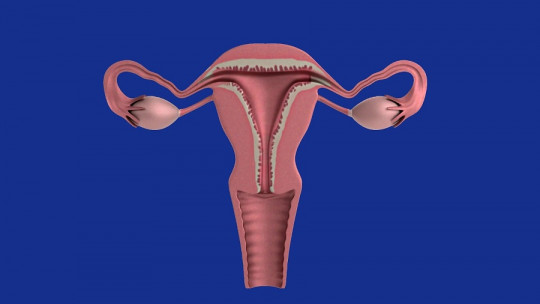
Of the most annoying headaches one can experience, there are none like migraines, which can be especially disabling for hours or even days. The person experiencing a migraine attack sees their life greatly limited and, sometimes, cannot stand light or noise.
If we add to this vomiting, the discomfort of the affected person is exponentially greater. Extreme headache and gastric symptoms are a very uncomfortable cocktail that makes the person who suffers them not only bothered by physical ailments, but also by significant psychological discomfort.
Next Let’s learn more about migraines with vomiting what causes them and what treatments exist to alleviate the emotional symptoms they cause.
Migraines with vomiting: characteristics and health effects
One of the things that can most affect the health of an individual are migraines, neurological problems that cause a severe headache And if on top of that these pains are accompanied by other clinical manifestations, such as nausea and vomiting, the discomfort is not only limited to the illness itself, but it limits the individual’s quality of life significantly since their mental health also suffers. Migraines can cause the fear that, because of these sudden vomiting, the person will be exposed when in public.
There are many types of migraines, each with its own symptoms and, in the particular case of migraines with vomiting, the disability of the affected person is almost total. As a preventive measure and also to gain a little independence and autonomy within the possible limits, It is essential that those who suffer from migraines learn to identify the first symptoms and know how to manage them It is necessary that they receive physical and psychological treatment to be able to cope with these extreme headaches.
People who experience migraines with vomiting they end up having to endure incessant, piercing pain in the head, and experiencing a lot of nervousness due to the fear of not knowing if they are going to vomit and if they are going to be exposed. Thus, we can understand that the consequences of these discomforts can be very harsh.
General aspects of migraines
To understand the severity of migraines with vomiting, we must first know some aspects of migraines in general.
Is about headaches that tend to recur and cause moderate to severe pain, lasting from 4 hours to 3 days The pain is often described as throbbing or throbbing, and usually begins on one side of the head. During a migraine episode you may be especially sensitive to light, sounds, and even smells. Women are about three times more likely than men to suffer from migraines.
It has been seen that migraines have a hereditary component Four out of five patients have a family history of migraines and it has been seen that if one of the parents has suffered from them, each of their children has a 50% chance of developing them. If both parents have had migraines in the past, the risk increases to 75%.
What happens in the brain with a migraine?
One of the explanations that have been tried to explain why migraines appear has to do, of course, with the brain. It is believed that what happens is that parts of the brain that use monoamines, such as serotonin and norepinephrine, become hypersensitized reacting quickly and excessively to certain stimuli.
One of the fundamental phenomena behind the appearance of migraines has to do with the interaction between the brain and cranial blood vessels. For this reason, the usual treatment for this type of ailment is usually directed at the constriction of the dilated arteries, to reduce the pain as it occurs, or at the tissues that are capable of causing the sensation of pain associated with migraines.
What are the symptoms?
The definition of what a migraine is already highlights by itself what its main symptom is: headache. The intensity of the pain can be very variable from the beginning, and can be mild, moderate or severe. If you do not receive any treatment at the beginning, the headache will eventually become more severe Among the most notable symptoms we find:
Migraines have the peculiarity that they can move in terms of headache. That is to say, the pain can go from one side of the head to the other It can also affect the front of your head and make it feel like it’s your entire head that hurts.
As we have mentioned before, migraines have a varied duration, although they normally do not last more than 4 hours. However, the most serious ones can last for days, causing a high degree of disability for those who feel them when they are unwell for a long period of time. Chronic migraines can interrupt daily activities and reduce quality of life, and if they are also accompanied by nausea and vomiting, your life will be even more affected.
Migraine sufferers report a feeling of anticipating their pain, that they know it’s going to come when it comes. Once the pain has arrived, these same people already predict whether they will vomit or not based on whether they manage to control their nausea. At this point, the person’s handling of the situation and the way they deal with the symptoms is key.
Patients with these headaches, with or without vomiting, usually experience them on average between two and four times a month Unfortunately, there are cases in which these annoying headaches are daily, causing a very high degree of disability and making it impossible for those who suffer from them to lead a normal life. Other cases, much luckier, only have migraines once or twice a year.

- Related article: “Anxiety dizziness: how they appear and how to combat them”
Causes of migraines with vomiting
The causes behind migraines with vomiting are very varied. Among the main common triggers of these headaches with gastric symptoms are the following:
1. Stress and anxiety
It is common that people with migraines with vomiting present them after experiencing a highly stressful event Stress is an emotion, but this does not mean that it only affects the emotional level of the individual, but it also alters their physiology.
Being stressed manifests itself in the form of muscle tension, contributing to blood vessels dilating and migraine aggravation. Added to this, this same stress causes gastric alterations and can cause nausea and vomiting.
- You may be interested: “What is anxiety: how to recognize it and what to do”
2. Sensitivity to certain substances
Some people have sensitivities to certain food components Among the foods that have been associated with migraines we have aged cheese, red wine and other alcoholic beverages, chocolate and sausages. Special mention must be made of hyper-processed products that contain food additives such as, for example, nitrates, substances that are related to headaches.
And since we are talking about diet, we mention that a factor that predisposes to the appearance of migraines is skipping meals. When the body does not have all the necessary nutrients or has not had a good meal for a while, it can give us signs that something is not right causing us headaches. Nausea and vomiting may also occur, although the latter are less likely.
- Related article: “Psychology and Nutrition: the importance of emotional eating”
3. Caffeine
Caffeine is a psychostimulant substance and, as such, can cause headaches if consumed in large quantities. Curiously, also causes migraines if its consumption is abruptly limited after having taken it regularly
Thus, it can be said that coffee, tea or even chocolate (it also contains caffeine) can cause migraines, both by consuming too much of them and by stopping them suddenly.
Added to this is the fact that caffeine and methylxanthines in general (theophylline and theobromine) are heavy substances for our stomach, difficult to digest and that cause nausea if consumed excessively. They can also cause other gastric symptoms such as diarrhea and vomiting.
- You may be interested: “The 3 most important psychological effects of caffeine”
4. Hormonal changes in women
Migraines have traditionally been associated with the female sex and there is some sense in that. Although men can have them, the truth is that Women are up to three times more likely to experience these types of headaches as we have previously commented.
It is believed that certain hormonal changes associated with menstrual periods are to blame. The abrupt drop in estrogen caused by menstruation can also trigger migraines.
5. Medications
There are some medications that inflame blood vessels and excessive use can cause migraines Ironically, many of these drugs are intended for the occasional relief of headaches, but when used daily, they can affect the cerebral vessels, causing migraines.
Some of the drugs and medicinal substances associated with vasculitis (inflammation of blood vessels) are β-lactam antibiotics, macrolides, sulfonamides, quinolones, antiviral medications, selective serotonin reuptake inhibitors (e.g. fluoxetine), anticonvulsant medications (e.g., phenytoin), carbidopa, hydralazine, propylthiouracil, minocycline, levodopa, and diuretics.
- You may be interested: “Types of medications (according to their use and side effects)”
6. Temperature
It has been seen that Temperatures above 35ºC can activate the first symptoms of migraines at least in people who tend to present them.
- Related article: “The 24 branches of Medicine (and how they try to cure patients)”
Psychological treatment for migraine
Although migraine is a physical ailment, it must be approached from both a physiological and psychological perspective People who suffer from it not only suffer from a severe headache, but also from all the consequences associated with it, such as anxiety, fear of not knowing when the next attack will occur, fear of vomiting in a public place, and uncertainty that makes it impossible to do anything. short, medium or long-term plans depending on their frequency of appearance and intensity.
Although today there is no treatment that cures migraines with vomiting, there are therapeutic ways to improve the quality of life of the affected person, in addition to provide them with tools to adequately psychologically manage their illness
Through psychological means we find effective treatments for anxiety and depression, such as cognitive-behavioral therapy (CBT) and interpersonal therapy, which have been found to be beneficial for the psychological management of migraines and the psychological discomfort they bring with them.
We should also not ignore the power of other behavioral therapies, such as relaxation techniques or biofeedback training which some studies have suggested would be effective techniques for the emotional treatment of migraines. The main objective of these treatments is to help people suffering from these intense headaches learn how to promote feelings of relaxation and calm to make their pain more bearable.








